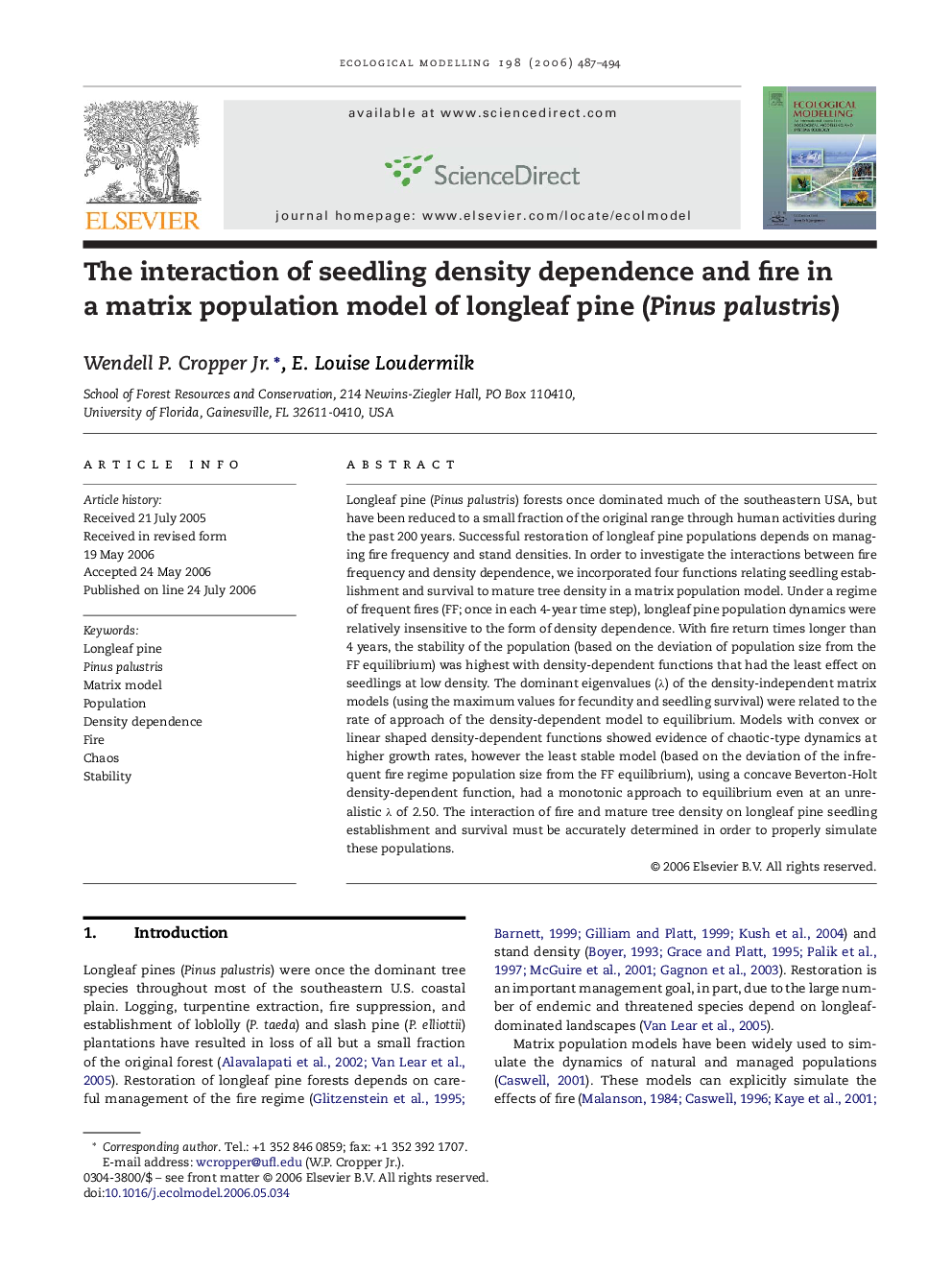| Article ID | Journal | Published Year | Pages | File Type |
|---|---|---|---|---|
| 4379071 | Ecological Modelling | 2006 | 8 Pages |
Abstract
Longleaf pine (Pinus palustris) forests once dominated much of the southeastern USA, but have been reduced to a small fraction of the original range through human activities during the past 200 years. Successful restoration of longleaf pine populations depends on managing fire frequency and stand densities. In order to investigate the interactions between fire frequency and density dependence, we incorporated four functions relating seedling establishment and survival to mature tree density in a matrix population model. Under a regime of frequent fires (FF; once in each 4-year time step), longleaf pine population dynamics were relatively insensitive to the form of density dependence. With fire return times longer than 4 years, the stability of the population (based on the deviation of population size from the FF equilibrium) was highest with density-dependent functions that had the least effect on seedlings at low density. The dominant eigenvalues (λ) of the density-independent matrix models (using the maximum values for fecundity and seedling survival) were related to the rate of approach of the density-dependent model to equilibrium. Models with convex or linear shaped density-dependent functions showed evidence of chaotic-type dynamics at higher growth rates, however the least stable model (based on the deviation of the infrequent fire regime population size from the FF equilibrium), using a concave Beverton-Holt density-dependent function, had a monotonic approach to equilibrium even at an unrealistic λ of 2.50. The interaction of fire and mature tree density on longleaf pine seedling establishment and survival must be accurately determined in order to properly simulate these populations.
Related Topics
Life Sciences
Agricultural and Biological Sciences
Ecology, Evolution, Behavior and Systematics
Authors
Wendell P. Jr., E. Louise Loudermilk,
